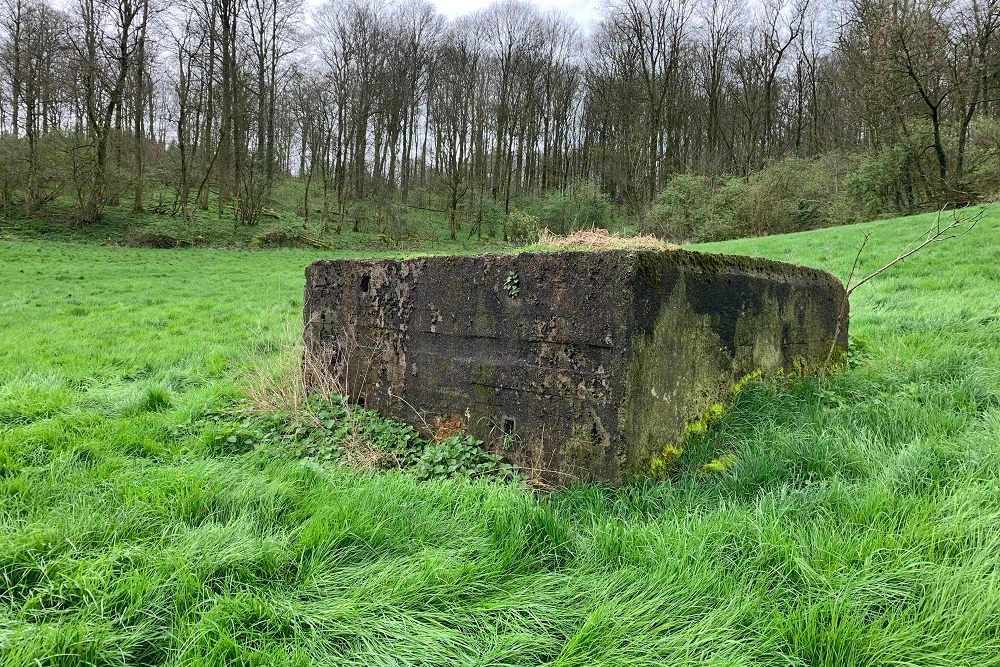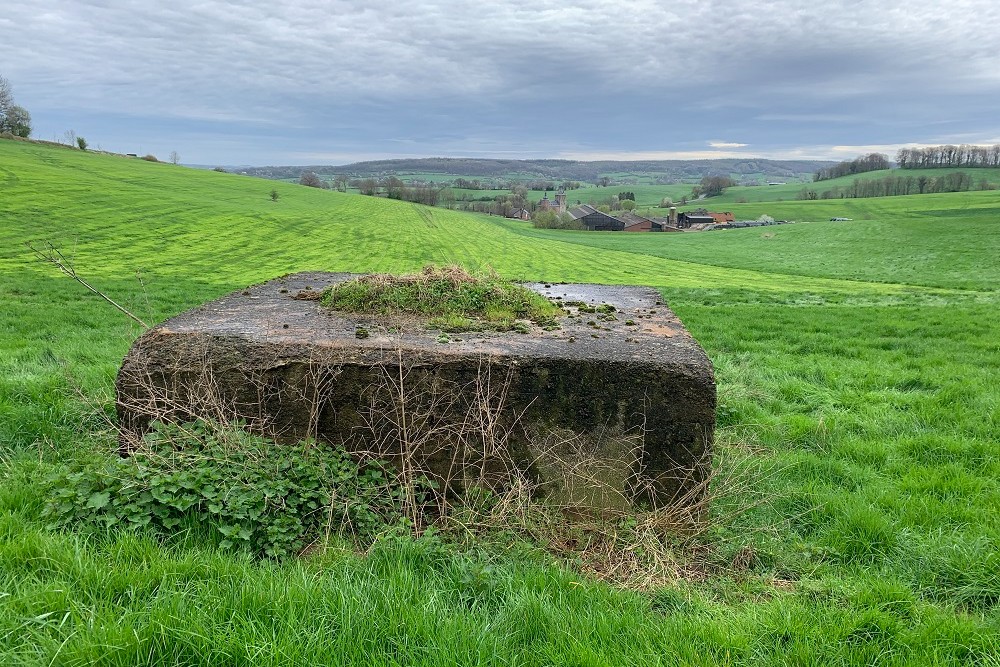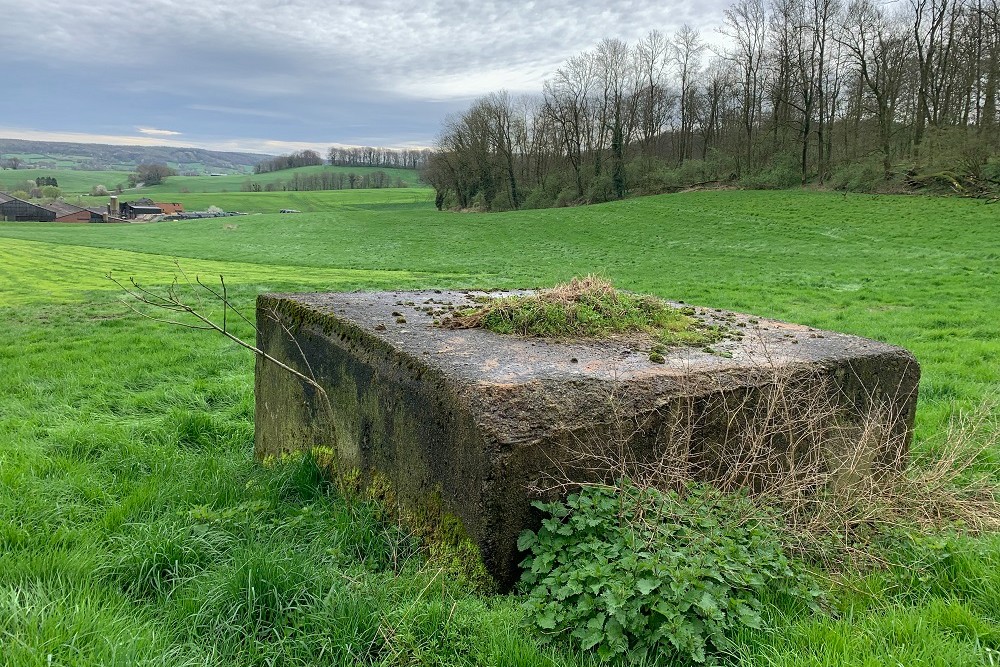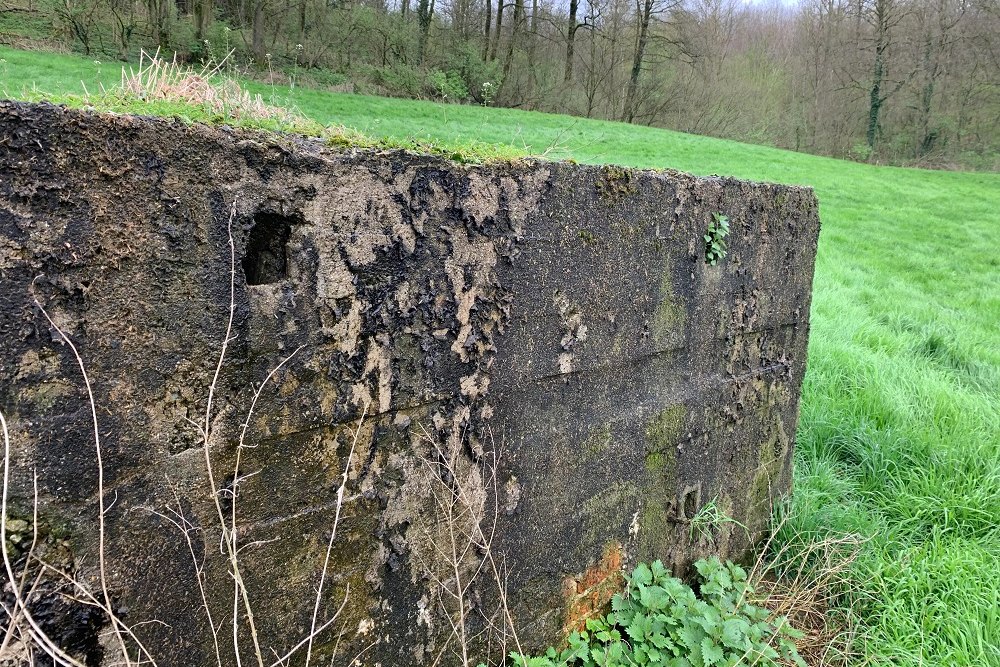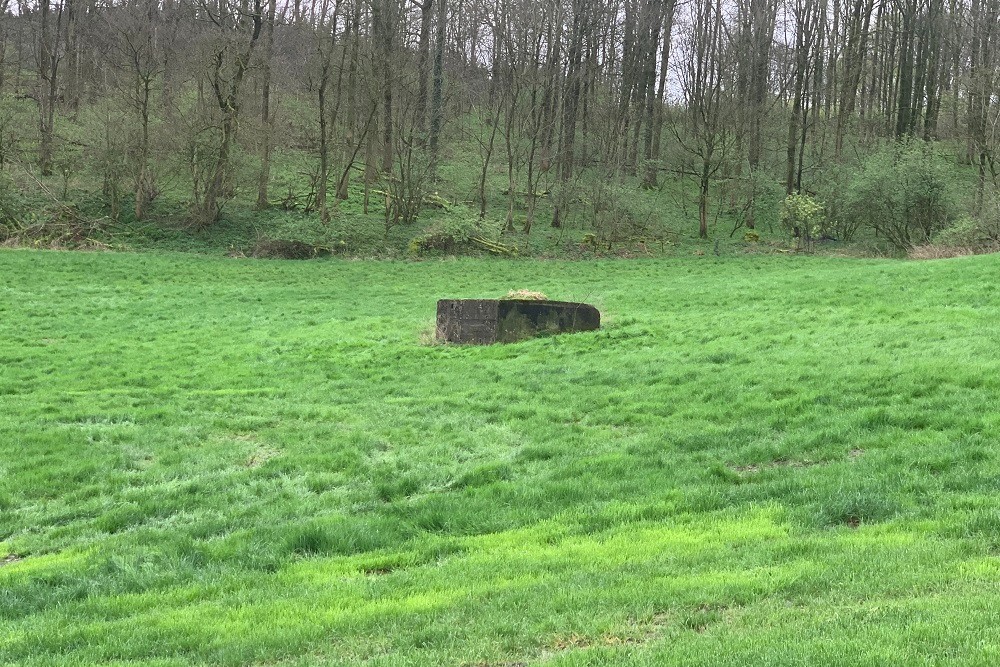Bunker A - Advanced Position Beusdael
The defense lines of the city of Liege, known as "La Posistion Fortifiée de Liège" consisted of 4 lines of defense built around Liege. It consisted of 16 fortifications with numerous line bunkers in between.
In addition to these linebunkers, there were also so-called 'Position Avancées', advanced positions. These were located in Beusdael, Bilstain, Dolhain, Goé, Grunhaut, Henri-Chapelle, Hèvremont, Hockai, Hombourg, Jalhay, Limbourg, Malmedy and Stavelot.
Beusdael is a village located just below the Dutch border. It's part of the Walloon municipality of Plombières. Near this village you can still find a number of small bunkers that fall under "La Posistion Fortifiée de Liège.
There were a total of 3 bunkers in Beusdael, A, B and C.
Bunker A is located in the middle of a meadow. (In earlier times the bunker will have been better hidden.) Entrance door and gun opening are bricked up. Over the years, the bunker has been buried by landslides caused by heavy rains, leaving it only 1 meter above ground level.
It is worth mentioning that before 1914, the present Plombières was known as Bleiberg. After the war, the Belgians thought that sounded German and the name was translated into French as Plombières. (Blei means lead in German, Plomb means lead in French).
The bunkers of the forward posts are small bunkers (3.5 x 3.5 m) that were used as observation and protection bunkers. They were equipped with a machine gun. The holes above and below the gun opening served for ventilation.
The Belgian defence in 1940 against a German attacks consists of five position lines
- The alarm position line, which consisted of border posts, from where an attack had to be reported. Such positions were manned by the national police and units of the advanced positions
- The advanced position line, which consisted of non-permanent positions, mainly used to slow down a first attack. From here destructions of infrastructure and obstructions were organised.
- The covered position line was the first real defence line, from the anti-tank ditch near Antwerp, along the Albert Canal, the river Maas as far as Namur. This line was manned by 14 Belgian divisions. Besides the fortresses near Antwerp, Liège and Namur the line wasn’t very strong as far as it concerned fortification.
- The [bresistance position line, also known as KW-stelling or KW position line, was the first main defence line, consisting of bunkers, tank barriers and anti-tank ditches. It went from Fort Koningshooikt near Antwerp, via Leuven, Waver, Gembloers as far as the fortress of Namur. In case of a German attack, the French armies and the British Expeditionary Force would move as far as this defence line.
- Interior position line was in fact several defence lines which consisted of old fortifications around the Flemish main cities. It accommodated the main services. Due to the connections with harbours supplies and fuel were guaranteed.
Do you have more information about this location? Inform us!
Source
- Text: Kees Boks en Ed Lewandowski
- Photos: Ed Lewandowski
Nearby
Museum
- Remember Museum 39-45 - Thimister-Clermont
- Visitor's Centre US Military Cemetery Margraten - Margraten
Point of interest
- Information Sign Electric Wire - Sippenaeken (Plombières)
- Tunnel of Laschet - Hombourg (Plombières)
- Information Sign Crashed P47 Thunderbolt - Mechelen
Monument
- Memorial Electric Wire - Sippenaeken (Plombières)
- Memorial Stone Corporal Geury - Voeren
- War Memorial Churchyard Teuven - Teuven (Voeren)
Cemetery
- Belgian Graves Veterans Teuven Churchyard - Teuven (Voeren)
- Belgian War Graves Churchyard Teuven - Teuven (Voeren)
- Belgian War Graves Remersdaal - Remersdaal (Voeren)
Remembrance Stone
Fortification
- Bunker B - Advanced Position Beusdael - Beusdael (Plombières)
- Bunker C - Position Avancée Beusdael - Beusdael
- Bunker H - Advanced Position Hombourg - Hombourg (Plombières)
